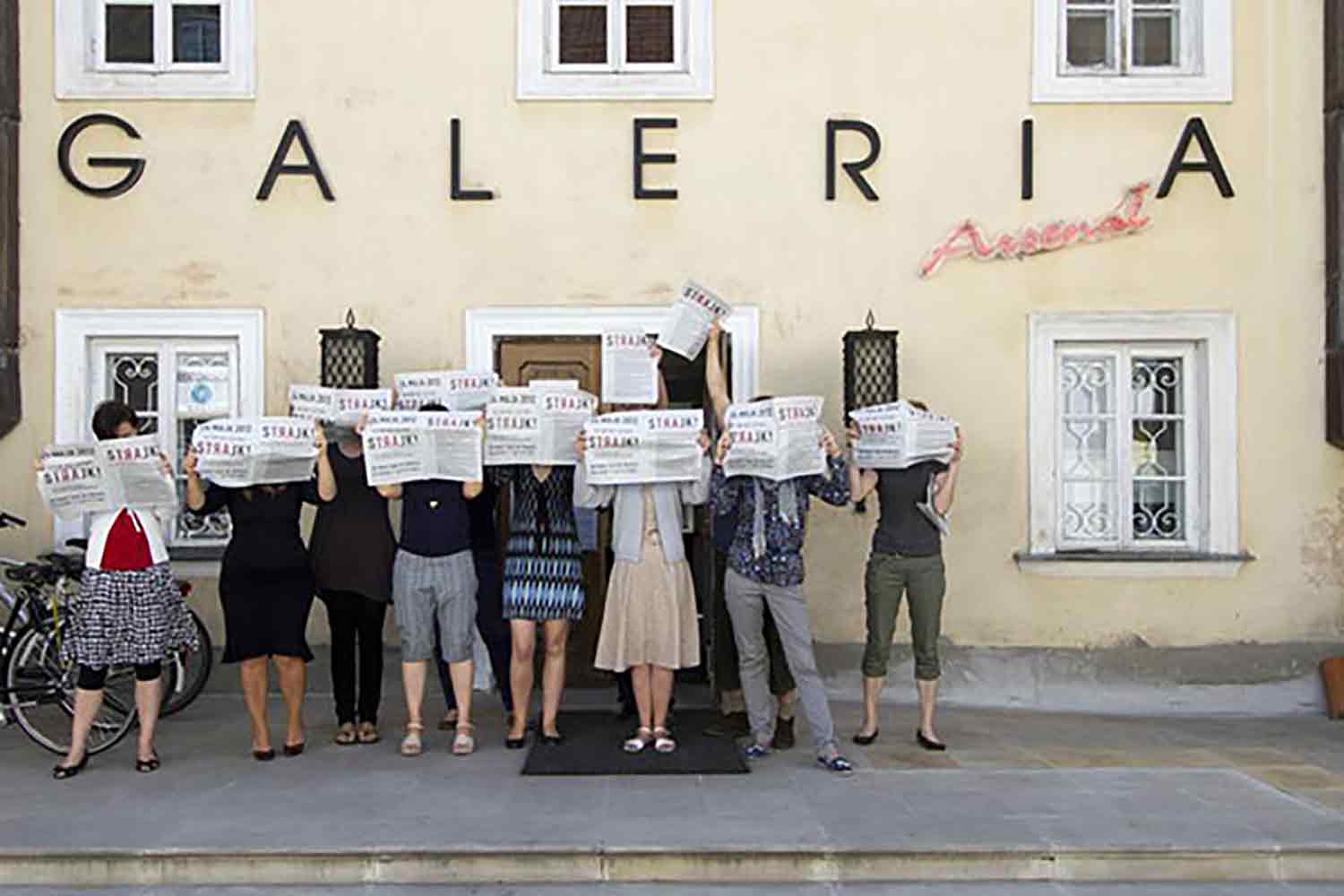- Login
Critical Spatial Practice







A wave of art strikes, boycotts, and occupations has engulfed global artistic circulation. These protests have directly or indirectly targeted artistic infrastructures like museums, biennials, and art fairs. Organizing an art strike, partaking in a boycott, or occupying art infrastructure are best understood as acts of productive withdrawal. These instances of social and political creativity reinvigorate ways of practicing and thinking about art by revamping existing infrastructures and giving shape to new institutional assemblages. These new assemblages sustain art as a practice of freedom.
I wrote this text in late 2017 to address the wave of art strikes, boycotts and occupations that transpired in the 2010s, and reflect upon new, emergent models of artistic self-organisation prompted by what I termed as “productive withdrawals”. My main argument was, and still is, that the dominant market-biennial nexus—based on the financial subsumption of artistic aura and an accelerated peddling of cultural and intellectual contents—erases the artistic qualities of the idioms thus circulated. I argued that the forms of stabilizing values inherent to the market-biennial nexus depend on the circulation of emptied commodities (the faster they move, more valuable they become). I proposed that strikes, boycotts, and occupations not only identify these self-referential operations for what they are: empty usurpations. They also formulate new, progressive responses to the conundrum thus identified. Due to the productive withdrawals, striking art workers engender new art sustaining environments that function as nascent institutions of the common, sustaining not only artistic practices, but also artistic values.
I am writing these words in the times of COVID pandemic, sitting at my home-office in Warsaw, which just a few days ago became a ghost city, with self-imposed social distancing. All artistic and academic institutions were suspended, artistic projects cancelled, and artistic projectariat, who usually survives on a bread line, exposed to the structural risks of precarity. And yet, following my arguments from 2017, this crisis could become an opportunity to rethink, and possibly reboot global art and academic systems, where everything moves so that nothing can change. Such reflection should be prompted by progressive movements, as otherwise this cataclysm will be instrumentalized by disaster capitalism to strengthen its grasp on both society, economy, politics and the arts.
KUBA SZREDER is a researcher, lecturer and independent curator, based in Warsaw, working as an Associate Professor at the department for art theory of the Academy of Fine Arts in Warsaw. He had co-curated many interdisciplinary projects hybridizing art with critical reflection and social experiments, such as the exhibition Making Use: Life in Postartistic Times (together with Sebastian Cichocki, Museum of Modern Art, Warsaw 2016). He actively cooperates with artistic unions, consortia of post-artistic practitioners, clusters of art-researchers, art collectives and artistic institutions in Poland, UK, and other European countries. In 2009 he initiated Free / Slow University of Warsaw, with which he completed several inquiries into the current conditions of artistic labor. In 2018, together with Kathrin Böhm, he established the Centre for Plausible Economies in London, a research cluster investigating artistic economies. Editor and author of books, catalogues, chapters and articles tackling such issues as the political economy of global artistic circulation, art strikes, modes of artistic self-organization, instituting art beyond art market and the use value of art. Currently working on an English edition of his book ABC of Projectariat (2016), a critique of the political economy of artistic circulation.
In this text, I focus on how spaces and institutions are both contested and re-assembled in result of withdrawal of artistic labour. In contrast to advocates of the business-as-usual, who are in favour of reproducing existing institutional or spatial forms, I concur that occupations or strikes are productive, also in a sense of producing spaces, where collective struggles are waged, and where new forms of being-together are engendered and tested.
Antonio Negri, Art and Multitude (Cambridge: Polity, 2011)
John Roberts, Revolutionary Time and the Avant-Garde (London: Verso, 2015)
Hito Steyerl, “If You Don’t Have Bread, Eat Art!: Contemporary Art and Derivative Fascisms,” e-flux journal 76 (October 2016)
This piece was originally published by e-flux, and is still available on their web page: https://www.e-flux.com/journal/87/168899/productive-withdrawals-art-strikes-art-worlds-and-art-as-a-practice-of-freedom/



































































